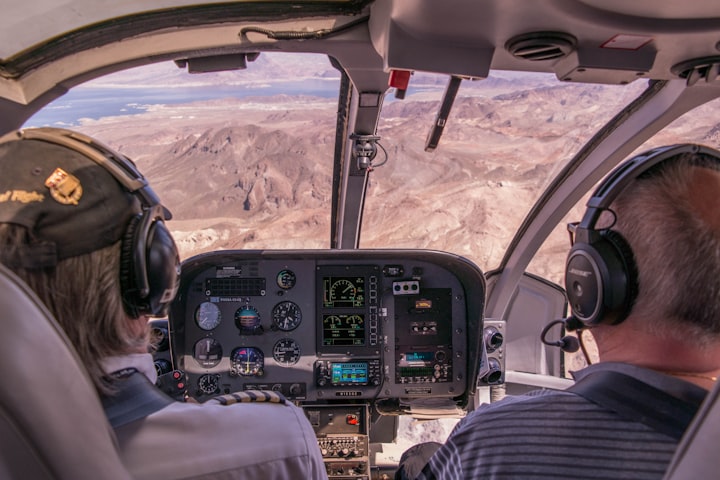What are some of the physical symptoms that pilots can experience when exceeding the maximum G-force limit?
Read more

Exceeding the maximum G-force limit can cause pilots to experience a range of physical symptoms. Here are some of the most common ones:
1. Blackout: One of the most serious symptoms of high G-forces is a loss of consciousness, also known as a blackout. This occurs when blood is forced away from the pilot's brain, causing them to lose consciousness.
2. Redout: A redout is the opposite of a blackout, where blood pools in the pilot's head, causing their vision to turn red or brown. This can be disorienting and make it difficult for the pilot to see or control their plane.
3. Tunnel vision: High G-forces can cause pilots to experience tunnel vision, where their field of vision narrows and they can only see what is directly in front of them.
4. Nausea and vomiting: High G-forces can also cause pilots to experience nausea and vomiting, which can be distracting and make it difficult for them to concentrate on flying their plane.
5. Fatigue: Experiencing high G-forces can be physically exhausting for pilots, causing them to feel fatigued or dizzy.
To prevent these symptoms from occurring, pilots must undergo rigorous physical training to build up their tolerance to high G-forces. They also wear specialized flight suits and use breathing techniques to help regulate their blood flow and prevent blackout and other symptoms.
Pilots use a breathing technique called the anti-G straining maneuver (AGSM) to regulate their blood flow and prevent blackout or other symptoms of high G-forces. Here's how it works:
1. Before entering a high-G maneuver, the pilot takes a deep breath and exhales about two-thirds of it.
2. The pilot then begins to strain their abdominal muscles and leg muscles, while simultaneously making a "huh-huh-huh" sound, similar to a grunt.
3. This straining action helps to increase the pressure in the pilot's chest and abdomen, which in turn helps to push blood back up toward the brain.
4. The pilot continues to use this technique throughout the high-G maneuver, while also trying to maintain normal breathing patterns.
By using the AGSM, pilots are able to maintain consciousness and prevent other symptoms of high G-forces. However, this technique can be physically demanding and requires rigorous training to master. Pilots must also be careful not to overuse the technique, as it can cause fatigue or other physical symptoms if used excessively.
What are some other techniques pilots use to prevent high G-forces?
In addition to the anti-G straining maneuver (AGSM), pilots use a variety of other techniques to prevent high G-forces and the associated physical symptoms. Here are some of the most common techniques:
1. Tight turns: One way to minimize the G-forces experienced by a pilot is to make tight turns, which allow the plane to change direction more quickly without accelerating too much.
2. Controlled breathing: Pilots often use controlled breathing techniques to help regulate their blood flow and prevent physical symptoms. This can involve taking deep breaths or exhaling forcefully to maintain blood flow.
3. Pre-breathing: Before entering a high-G maneuver, pilots may pre-breathe pure oxygen to help increase their blood oxygen levels and reduce the risk of blackout or other symptoms.
4. Exercise: Pilots undergo rigorous physical training to build up their tolerance to high G-forces. This can involve exercises such as weightlifting, running, or swimming, as well as specialized training programs that simulate high-G maneuvers.
5. Flight suits: Pilots wear specialized flight suits that are designed to compress their bodies and prevent blood from pooling in their lower extremities. These suits can help to reduce the risk of blackout and other symptoms.
Overall, preventing high G-forces is a critical part of aviation safety, and pilots must be well-trained and prepared to handle the physical demands of high-performance flying.
About the Creator
Car Community
high quality car stories , everything you should know about every car ever made.






Comments
There are no comments for this story
Be the first to respond and start the conversation.